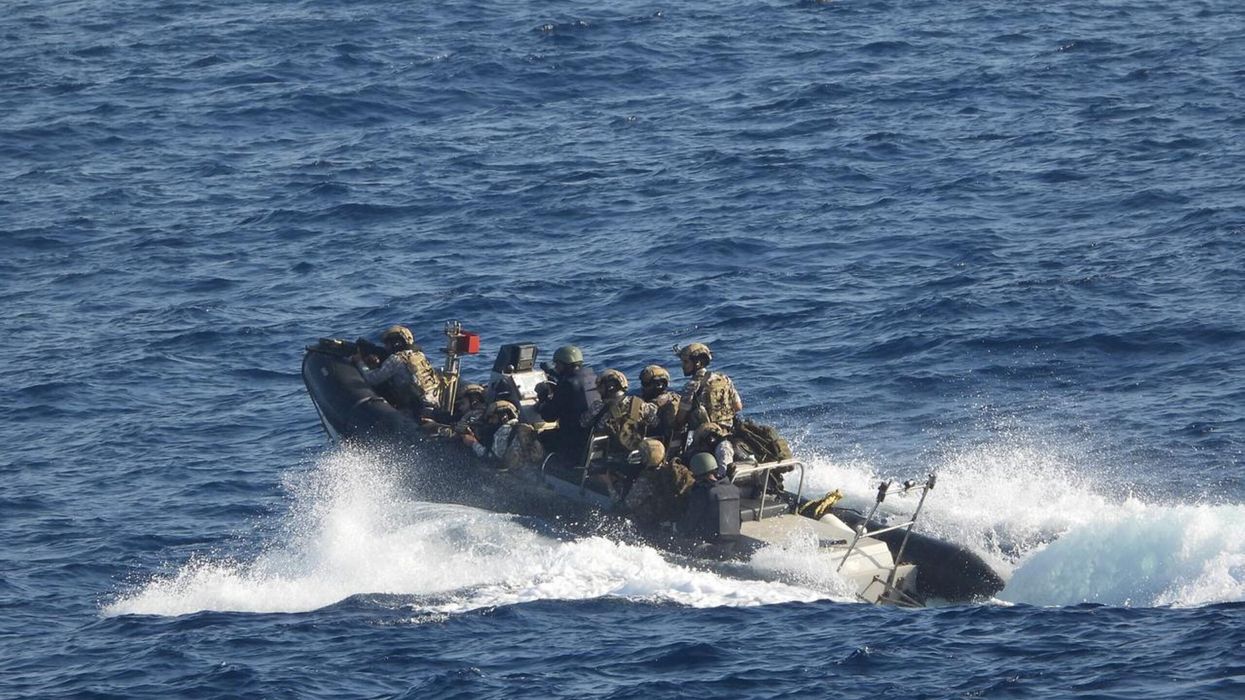The Indian Navy announced on Friday (2) that it had successfully rescued 19 crew members from a fishing vessel that had been hijacked off the coast of Somalia. This rescue operation marks the third of its kind this week, following a series of attacks on shipping in the region.
A distress call from the Iranian-flagged FV Omari was received on Wednesday and the Indian patrol boat INS Sharda intercepted the vessel in the "early hours" of Friday, a navy statement said.
"The ship has ensured successful release of the crew... along with the boat," it said.
"The ship also undertook confirmatory boarding on FV Omari to sanitise and check on the well-being of the crew who had been held captive by the Somali pirates."
Eleven Iranian and eight Pakistani crew members were aboard the vessel, the statement said.
Photographs published by the navy showed Indian naval commandos boarding a boat, which was emblazoned along its side with the Iranian national flag, in open waters.
One photo appeared to show one of the hijackers raising their hands in surrender.
Seven pirates had taken control of the ship, said the navy statement, which did not give details of whether the hijackers were detained.
It was the third time in the past week that Indian forces had intercepted Iranian-flagged fishing vessels in the area to rescue their crews from Somali hijackers.
Another patrol boat "compelled the safe release" of 19 crew members from the FV Al Naeemi overnight on Monday.
That operation came just 36 hours after India said its forces had freed 17 crew members aboard the MV Iman.
The hijackings off Somalia have fuelled concerns about a resurgence of Indian Ocean raids by opportunistic pirates, coming on top of a separate surge in attacks launched by Yemen's Iran-backed Huthi rebels.
Huthi gunmen have launched scores of attacks in the Red Sea and Gulf of Aden targeting what they deem to be Israeli-linked vessels in response to Israel's war against the Palestinian militant group Hamas in Gaza.
International naval forces have been diverted north from the Gulf of Aden into the Red Sea, sparking fears that pirates will exploit the security gap, with the first successful case of Somali piracy since 2017 recorded in December.
Pirate attacks off the Somali coast peaked in 2011 -- with gunmen launching attacks as far as 3,655 kilometres (2,270 miles) from the Somali coast in the Indian Ocean -- before falling off sharply after international navies sent warships and commercial shipping deployed armed guards.
As well as rescuing the crew and freeing the boats, India said its operations were preventing "misuse of fishing vessels as motherships for further acts of piracy" on larger merchant vessels.
India's navy has been deployed continuously off Somalia since 2008 but sent a far larger force in December, including three guided-missile destroyers and P-8I reconnaissance aircraft, to "maintain a deterrent presence" after a string of shipping attacks.
India, which has close trade ties with Iran, has not joined the US-led maritime task force in the Red Sea to protect international shipping against attacks by Huthi rebels. (AFP)












